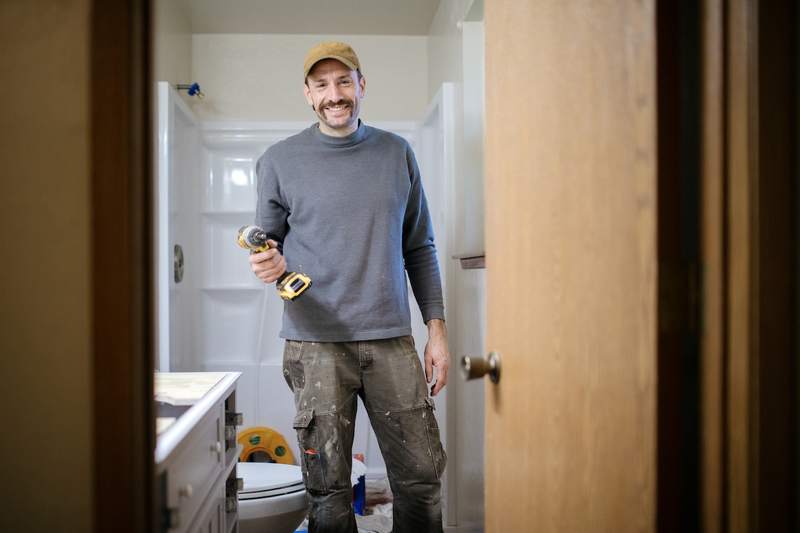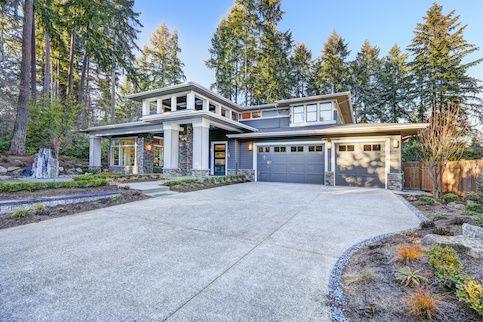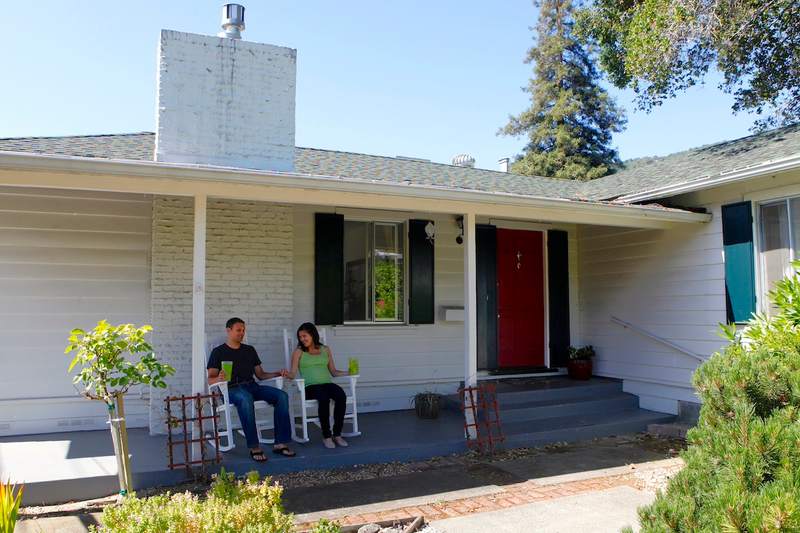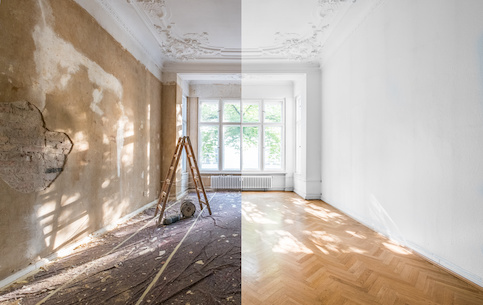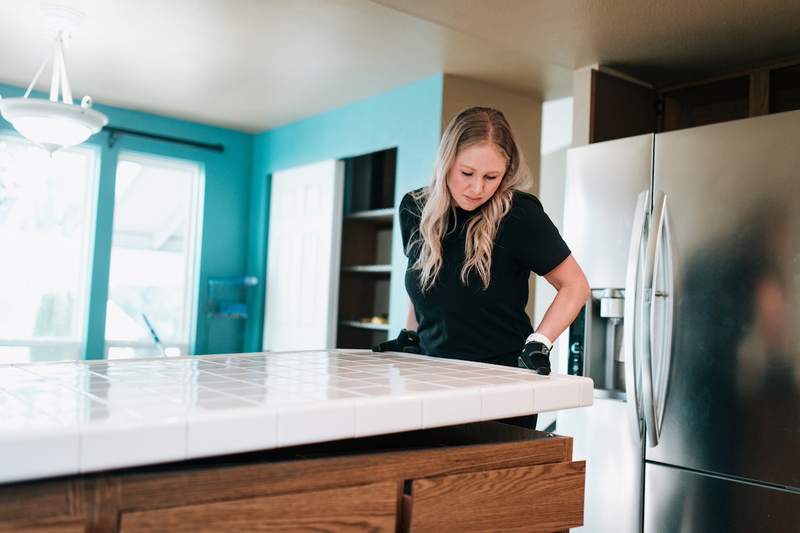Affording a home is challenging enough, but affording to both buy a home and renovate it is even more challenging. One solution for buying and renovating a house is an open-end mortgage, which allows you to borrow more than the purchase price and access the unused funds later for renovations – all without needing a second mortgage. These loans are rare and not available in every state, but they may offer a convenient solution for qualified borrowers.
Key Takeaways:
- Open-end mortgages allow you to borrow more than the purchase price of a home and borrow the unused funds later to pay for home improvements.
- You’ll need strong credit, a low DTI ratio and a significant down payment to get an open-end mortgage.
- The pros of open-end mortgages include the ability to borrow for home improvements without getting a second loan or refinancing. In contrast, the cons include higher interest rates and a limited draw period.
How Does An Open-End Mortgage Work?
An open-end mortgage finances the purchase of a home while allowing you to borrow more money later on the same loan to pay for home improvements.
With an open-end mortgage, the lender will fund you for the entire loan amount you qualify for, rather than just the home’s purchase price. If you don’t use the full amount to buy a home, you can later borrow the unused funds without needing to apply for a new loan or refinancing. The amount borrowed beyond the purchase price can be used only to pay for home improvements. If you’ve paid down your mortgage balance before you need this money, you can borrow that money again.
For example, if you’re approved for a $300,000 open-end mortgage and use $250,000 to buy a home, you can borrow an additional $50,000 later to pay for home improvements. If you’ve paid down your balance to $230,000 when you’re ready to make those improvements, you could borrow $70,000 and bring the total balance back to the full amount of $300,000.
Most lenders set a draw period where you can borrow unused funds – typically five or 10 years. You’re only charged interest on the amount you borrow, so you don’t have to pay interest on the additional amount until you use it.
The rules for open-end mortgages vary by lender, so make sure you understand your loan terms before accepting them.
What Is An Open-End Mortgage Vs. A Closed Mortgage?
Most mortgages are closed, with the lender only letting you borrow enough to buy the home. If you later wanted to make improvements, you’d need a new loan such as a cash-out refinance, home equity loan or home equity line of credit.
Open-end mortgages allow additional draws from the amount of financing you’re approved for.
What’s Your Goal?
Buy A Home
Discover mortgage options that fit your unique financial needs.

Refinance
Refinance your mortgage to have more money for what matters.
Tap Into Equity
Use your home’s equity and unlock cash to achieve your goals.
Open-End Mortgage Example
For a more detailed idea of how open-end mortgages work, consider this example:
You apply for an open-end mortgage and get preapproved for a $400,000 loan. When you find a home you want to buy, you need only $350,000. Assuming the loan has a 30-year term and a 7% fixed interest rate, you’ll pay $2,329 per month.
Because you were initially approved for up to $400,000 but only borrowed $350,000, you have $50,000 in potential financing remaining. After a year, you decide to renovate your home and need to borrow $30,000.
You can go back to your lender and ask for the $30,000 out of the $50,000 remaining in your open-end mortgage. The lender will disburse the money and add the $30,000 to your mortgage balance, increasing your monthly payments to $2,530.
Ready To Become A Homeowner?
Get matched with a lender that can help you find the right mortgage.
How To Get An Open-End Mortgage
One of the drawbacks of open-end mortgages is that they are rare. Many lenders do not offer open-end mortgages, and some states ban them entirely.
To find an open-end mortgage, you’ll need to search for lenders that offer them. Once you find a lender that provides open-end mortgages, the application process is similar to the process for other mortgages.
Open-End Mortgage Requirements
You’ll need strong credit and solid income to qualify for an open-end mortgage. Lenders are free to set their own requirements, but you’ll typically want to meet these requirements:
- A credit score of at least 620
- A debt-to-income ratio no higher than 43%
- A loan-to-value ratio no higher than 80%
Remember that needing an LTV ratio of 80% or less means a down payment of at least 20% – plus, you’ll need to pay closing costs.
Take The First Step To Buying A Home
Find a lender that will work with your unique financial situation.
When Would You Use An Open-End Mortgage?
Open-end mortgages make the most sense when buying a home you plan to renovate soon after purchasing.
For example, if you’re planning to buy a fixer-upper, an open-end mortgage can give you the flexibility to pay for the improvements and renovations without needing an additional loan. An open-end mortgage lets you avoid additional underwriting and only leaves you with one payment.
What Are The Pros And Cons Of Open-End Mortgages?
Open-end mortgages have several advantages, but it’s also important to consider the drawbacks.
Pros
Some of the benefits of open-end mortgages include:
- One monthly payment. Open-end loans let you buy a home and pay for renovations without needing a separate loan and monthly payment.
- Flexibility. You can borrow more money later if you need it to pay for renovations.
- No payments for unborrowed amounts. If you don’t borrow the additional funds, you won’t pay interest on the unborrowed loan amount.
Cons
Some drawbacks of open-end mortgages include:
- Lack of availability. Open-end mortgages are hard to find and are entirely unavailable in some states. You might struggle to find a willing lender.
- Limited draw periods. Open-end mortgages are flexible, but there can be restrictions on how long you can wait before drawing additional funds. If you wait too long, you’ll lose the option. Common draw periods are five and 10 years but vary depending on your lender.
- It could be unaffordable. Open-end mortgages may have higher interest rates than typical mortgages. Also, just because you’re preapproved for a large amount doesn’t mean you can afford the payments on that amount.
What Are The Alternatives To An Open-End Mortgage?
Open-end mortgages are one option for people looking to buy a home and finance future improvements, but they’re not the only one.
Fannie Mae HomeStyle Loan
Fannie Mae HomeStyle loans are specialized loans designed to help people buy and renovate or improve their homes. It’s important to note that Fannie Mae is not a lender itself. It is a government-sponsored enterprise that buys mortgages from banks, helping provide stability and liquidity in the mortgage market.
Like open-end mortgages, HomeStyle loans start by helping you finance a home purchase. After you buy the home, you can draw additional funds from the loan and use that money for renovations.
To make additional draws from your HomeStyle loan, you’ll need to work with an approved contractor. The contractor submits plans to the bank to get approval. Once the work is inspected, the bank pays the contractor.
These loans offer less flexibility than open-end mortgages but may be more widely available and easier to qualify for.
FHA Construction Loan
FHA construction loans can be used to build a new home or renovate an existing one. These loans are insured by the Federal Housing Administration, which makes them easier to qualify for. If you have poor credit and need to make improvements to a home, this loan may be a good fit.
Home Improvement Grants
Grants, unlike loans, do not have to be paid back. That makes them a great way to pay for home improvements or renovations.
Of course, if there’s free money available, you can expect things to get competitive. Grant programs often see many applicants, which can make it challenging to obtain financing. The programs available will also vary depending on where you live, as many programs are run by state and local governments.
Before applying for a loan to cover home renovations, check with the U.S. Department of Housing and Urban Development to see if any grants are available.
Home Equity Line Of Credit
A HELOC is a line of credit secured by the value of your equity. When you apply for a HELOC, the lender will allow you to borrow up to a set amount. You then have the option to borrow against that line of credit whenever you need to. So long as you don’t reach the set limit, you can borrow multiple times. You only pay interest on the amount you’ve borrowed.
“HELOCs are very good for accessing equity in a home without having to refinance an existing first mortgage, particularly if the first mortgage carries good terms and a very low interest rate,” says Casey Fleming, author of “Buying and Financing Your New Home” and a mortgage advisor with Silicon Valley Mortgage Corp. in Las Gatos, California.
HELOCs usually have a set draw period, during which you only make monthly interest payments and can draw more money from the line of credit. After the draw period ends, you must make full interest and principal payments and can’t draw any additional funds.
You can apply for a HELOC anytime, making it a good fit if you decide to make home improvements well after buying a home. However, you’ll have to go through underwriting again and may have to pay fees to keep the HELOC open. There can also be other drawbacks.
For example, a “pitfall of a HELOC is that the minimum payment is typically interest-only for the first 10 years,” Fleming says. “During this period, payments do not include principal, so the loan balance is not paid down unless the homeowner makes extra payments. This often comes as a surprise when the 10-year draw period is over.”
Home Equity Loan
A home equity loan works like a HELOC, except you receive the funds as a lump sum. A home equity loan is a second mortgage with its own interest rate and repayment term. You’ll need to make payments on a home equity loan in addition to your primary mortgage payment.
FAQ
Before you apply for an open-end mortgage, it’s important to understand how they work.
The Bottom Line
Open-end mortgages give you the flexibility to buy a home and finance future home improvements without needing to apply for another loan. Though uncommon, they can be useful in the right situation. If you’re buying a fixer-upper or want to improve a home after buying it, an open-end mortgage may be the right fit.
More From Quicken Loans:

T.J. Porter
T.J. Porter is a Boston-based writer who focuses on credit cards, credit and bank accounts. When he's not writing about all things personal finance, he enjoys cooking, esports, soccer, hockey, and games of the video and board varieties.
